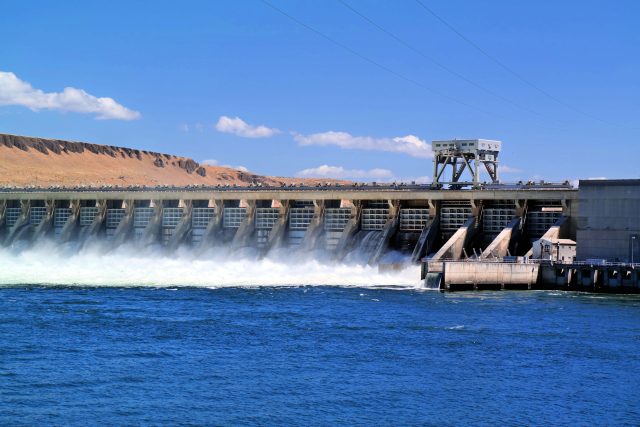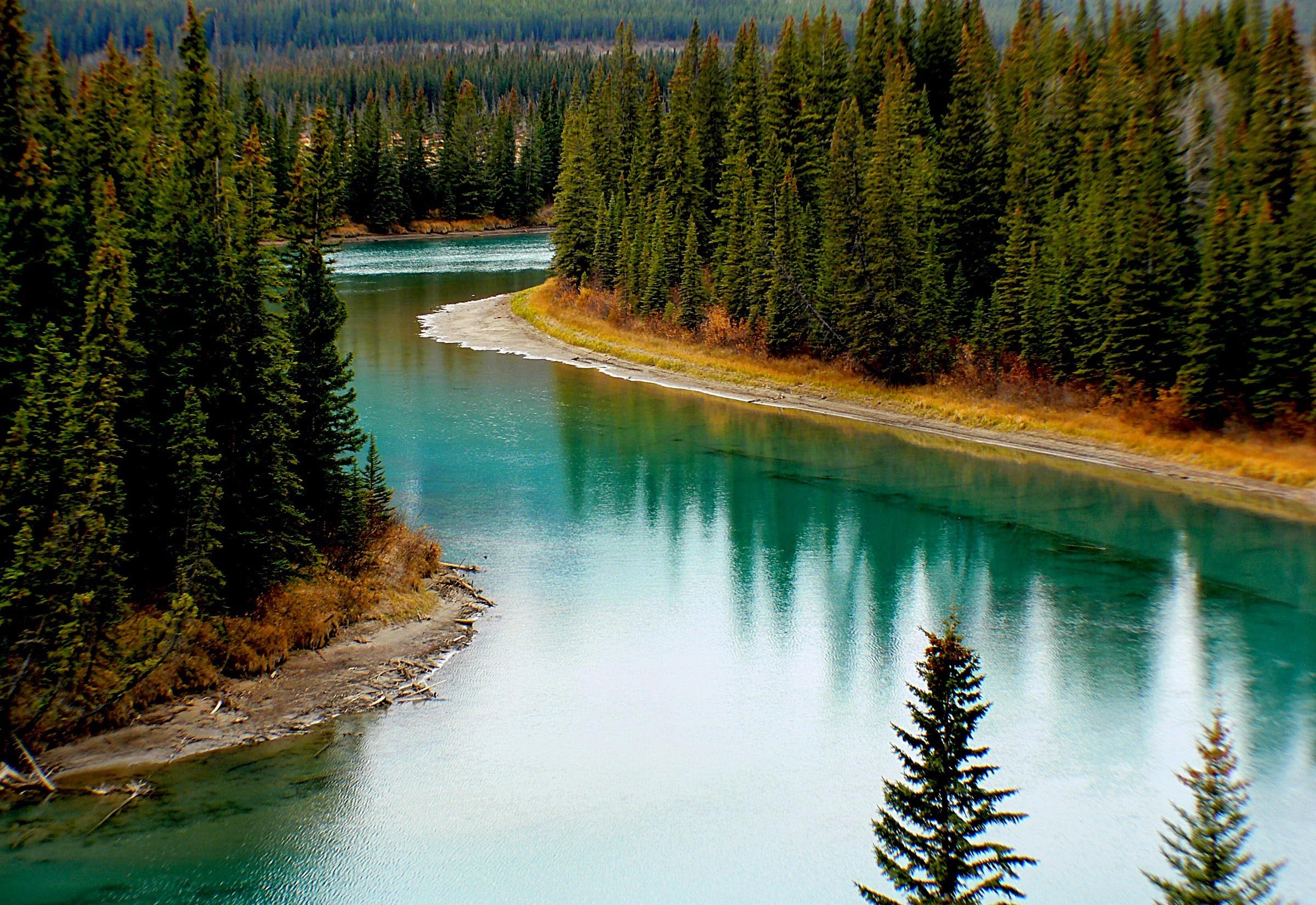
Hydropower is currently the most important source of ‘green’ energy, which not only has a zero carbon footprint but is also renewable. But it depends on an extremely valuable source threatened by climate change: water. Despite gloomy predictions by experts that rivers – the waters from which hydropower plants draw their power – will see their flows decline over the coming decades, hydropower will not disappear. At best, it will be converted from wave power. Until then, the construction of new hydropower plants is gaining momentum instead of slowing down. In the last two years alone, two mega-hydropower plants have been commissioned in Europe, and other large-scale projects have been launched. This is the case of a mega-project that has been abandoned in Romania for 40 years and was restarted last year.
Hydropower plants produce more energy than nuclear plants
Hydropower plants on rivers and streams produce more energy than nuclear power plants, wind turbines and photovoltaic panels. This is the situation today, but it will not be the same in the future. Just as wind power depends on the wind and solar power on the sun, hydropower depends on flowing water and, unfortunately, global warming is threatening this source of some of the cleanest energy. In the struggle to get away from their dependence on fossil fuels – which has intensified in the wake of the latest energy crisis – many countries have resumed construction of large hydropower plants, despite the exorbitant costs and lengthy work involved. Especially as, in Europe at least, the only viable renewable energy alternatives that are not dependent on the vagaries of the weather – biomethane and hydrogen as large-scale energy sources – are still in their infancy in terms of exploitation. But should we delude ourselves that we will get more energy when we have less and less water? When asked whether it is worth implementing large hydropower projects, two European countries – Switzerland and Portugal – said “yes”, the former inaugurating a mega-hydropower plant in 2022 and the latter in 2023. So has Romania, which has resumed a similar project abandoned 40 years ago. It should not be ignored that hydropower plants, in addition to the electricity they produce, have flexibility and large storage space, helping to maintain the stability of the electricity system. In other words, they help bring other sources into the mix, such as wind and solar. In other words, hydropower plants help to decentralise the energy system and make it more flexible, which is an important EU objective – in other words, not to be dependent on one source of energy or another.
Europe’s hydropower potential will fall by up to 12% in the next 50 years
But future forecasts leave little room for optimism. Two-thirds of hydropower dams are built on waters that will lose significant flow by 2050. Europe has neither the largest nor the most hydropower plants. And Europe’s hydropower production will fall further, with official data showing that Europe’s hydropower potential will fall by 7 to 12 percent over the next five decades. And because an estimated 90% of river basins are unhealthy, the EU aims to restore 25,000 out of a total of 1.3 million km of rivers to their natural course.
Europe has about 30 000 hydropower plants, of which only 21 000 are in operation, while 8 500 are in the planning stage and almost 300 are under construction. In 2022, hydropower accounted for almost 30% of EU renewable electricity generation and over 10% of EU electricity. It was also the year that 22.3% – a record high – of EU electricity was generated by wind and solar, and renewable sources reached 38% share in the total energy mix.
Environmental NGOs, on the other hand, argue that no more hydropower plants should be built in Europe because there are enough of them and their overlap with protected areas has devastating consequences for biodiversity. One in five hydropower plants in Europe is located or built in a protected area, and hydroelectric power prevents fish migrating through the turbines and diverting water into canals and tunnels in both hills and valleys. Hence the EU biodiversity strategy, which calls on countries to remove dams and barriers on water. Clearly, this will not happen, nor is it desirable to stop all hydropower plants. But clearly there is a need to upgrade existing hydropower plants and to invest in technologies that allow fish to migrate.

In Romania, hydropower plants produce almost a quarter of all electricity, above the European average of 17%. Only two hydropower plants produce this amount of energy: Iron Gates 1 and 2 on the Danube. However, since the 1989 Revolution, Romania has had more than 200 large hydropower plants with a total installed capacity of 6 443 MW and more than 450 small plants with a total capacity of 586 MW. All these projects were developed by private investors with subsidies from the state. The construction of small hydropower plants took off in Romania with the implementation of the Renewable Energy Sources Directive, which brought generous European funding for such projects. However, many of them were abandoned once these funds were “cut” from the next EU budget.
In the context of the post-war energy crisis in Ukraine, the authorities in Bucharest have resumed several hydropower construction projects left on stand-by, including one abandoned 40 years ago. In 2022, the former government included nine such projects in an emergency ordinance, as part of investment efforts for new renewables – hydro, wind and photovoltaic – that can be realised with EU funds. Some have been halted by national courts on the grounds that they are in protected areas, and the law – criticised by environmental NGOs, which urged President Klaus Iohannis not to enact it.
At the end of last year, Energy Minister Sebastian Burduja announced concrete steps to revive the Tarnița-Lăpuștești hydropower mega-project, which Romania “has had a duty to do for at least 40 years”. The cost of the feasibility study alone is estimated at €3.5 million. With a pumped storage production capacity of up to 1,000 MWh, this hydropower plant will solve several problems, mainly the need to balance the power system.
“For everyone to understand: we have two lakes, at Lăpuștești and at Tarnița, one placed higher than the other. When we need production in the system, the water from the upper lake goes through turbines and produces electricity. When we have surplus production, we turn on the pumps in the lower lake and basically pump the water back up to the upper lake. It’s like a big green battery,” the minister explained, quoted by Agerpres.
Work could start next year, with a maximum of 12 months for the completion of the feasibility study. Moreover, the Tarnița – Lăpuștești hydropower plant will be a regional provider of balancing and storage services and will contribute to ensuring the energy security not only of Romania but also of part of Central and Eastern Europe, says the ministry headed by Sebastian Burduja. The Tarnița project is similar to the mega-hydropower plant inaugurated last year in Portugal. The new Tamega hydropower complex has a huge capacity of 1,158 MW. It is equipped with a “giga-battery”, with power coming from both new electricity generation and storage.
By 2030, 45% of the EU’s energy mix should come from green sources
Green sources should supply 45% of the EU’s energy mix by 2030, in line with the targets set to reach the ambitious 2050 climate neutrality goal. Relying on water power to accelerate the transition to renewables would be irresponsible, environmental NGOs say. And the European Commission is calling for more thorough impact studies from the developers of these projects. So many of them – and we’re talking about mini-hydropower plants here – don’t get past the study stage.
The good news for the future of hydropower is that there are already new technologies for producing it using the power of ocean waves. Over the past decade, numerous projects have already been developed and have passed the first test phases. However, these technologies are not mature enough and their costs are still extremely high. As these technologies are not sufficiently developed, it is not yet possible to determine exactly how much it would cost to produce electricity from waves, but some pioneering studies in the field suggest that these costs could be close to those of wind and solar power production.



 Subscribe
Subscribe